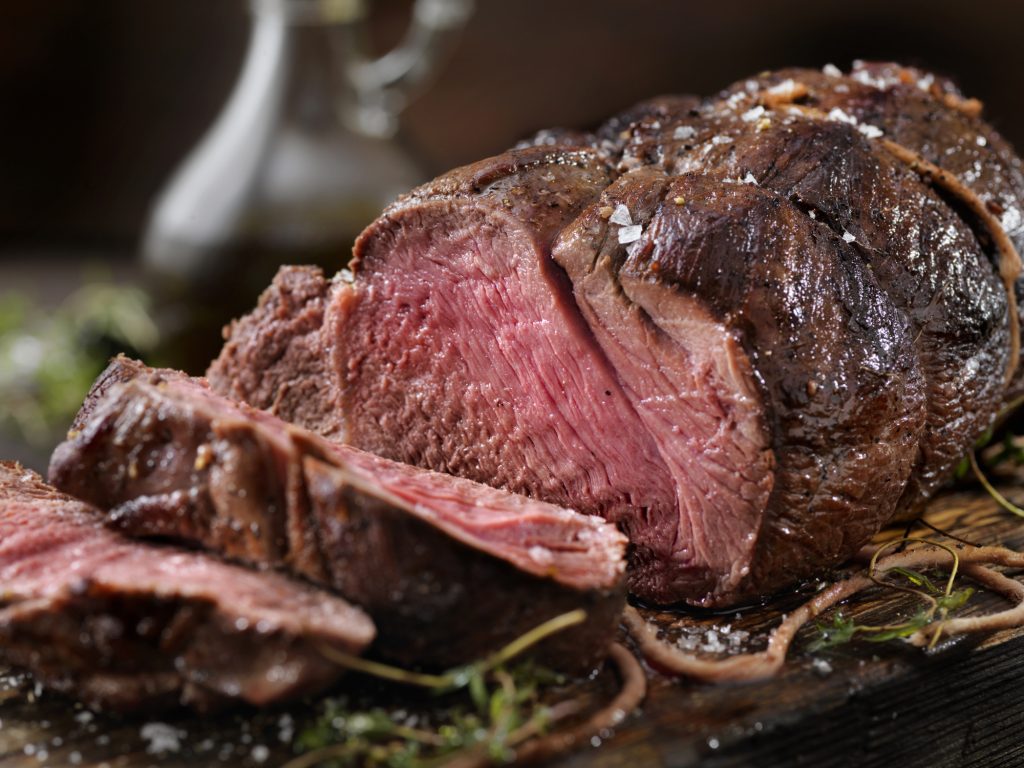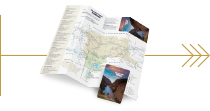Game On! The Finer Points of Enjoying Elk Meat
 Venison, Elk Sirloin Tip Roast
Venison, Elk Sirloin Tip Roast
It’s a common practice among big game hunters; you cook the tenderloin as soon as possible. It’s a ritual of sorts, a celebration, a show of reverence, and gratitude. Plus, it’s delicious, most people can’t wait to get it on the grill! I remember the first time I saw a fresh elk tenderloin. For one, it was huge. But what was most striking was the color, the meat was a deep, rich red—a shade that came out, even more, when cooked.
Having had my fair share of deer meat, which can require some cooking finesse to ensure it doesn’t taste too “wild-gamey,” I was wholly unsuspecting of how good elk meat is. Unlike deer, it has a mild, savory flavor, similar to beef, but just a bit more subtle. Cooked correctly, elk meat is tender, juicy, and flavorful.
In general, elk meat is lower in fat, cholesterol, and calories than beef, but maintains high amounts of iron and B vitamins. There’s a lot to be said for grazing on these fresh mountain grasses.
I have to admit, at first, I was intimidated to cook elk. It’s not an easy animal to harvest, and I didn’t want to mess it up. But I quickly learned the nuances. The main thing to know is not to overcook it. Since there is significantly less fat, elk cooks faster than beef. If you prefer your meat cooked well, try cooking it to medium, then letting it rest to finish it off.
Another trick to keeping the meat tender and juicy comes from Samin Nosrat, in her book “Salt, Fat, Acid, Heat.” Nosrat recommends salting meat in advance, “Because salt also initiates osmosis, and visibly draws water out of nearly any ingredient it touches, many people believe that salt dries and toughens food. But with time, the salt will dissolve protein strands into a gel, allowing them to absorb and retain water better as they cook. Water is moisture: its presence makes meat tender and juicy.” Her general suggestion is to salt the day before, if possible, but if you’re anxious to enjoy the meal, a couple of hours at room temperature will do the trick!
The tenderloin (or backstrap) is the same cut as a filet mignon on a beef. It can be cooked as a roast, then sliced, or, first cut into small medallions, pan-seared, grilled, or perhaps done in a reverse sear with rosemary and butter.
We love horseradish mashed sweet potatoes and hashed brussels sprouts with lemon and roasted pistachios in our family. We’re not talking about the too-sweet yams you may have at Thanksgiving. Jersey sweet potatoes aren’t very sweet, and the addition of horseradish and sour cream offsets it giving it a little spice and a slight tang. And trust me, if you aren’t a fan of brussels sprouts, you will be after this dish!
Elk Tenderloin
Cut tenderloin into nice sized medallions, 2-3” thick and season generously with salt at least two hours ahead, and up to one day before cooking. Elk meat is best when brought to 125-135 degrees internally, and no more than 140 degrees. Let the cooked meat rest for at least five minutes before eating.
To Roast:
Heat oven to 350 degrees.
Heat cast iron or another oven-safe pan on top of the stove.
Quickly sear each side.
Put in the oven and roast for 6-10 minutes.
To Grill or Pan Fry:
Cook 3-4 minutes per side; let rest.
To Reverse Sear:
Heat oven or grill to 300-325 degrees. Bake or grill for 2-3 minutes per side in a cast iron or other heat resistant pan. Remove from oven and sear for 1-2 minutes per side. For an extra treat, melt a dollop of butter in the pan with some freshly chopped rosemary and baste it.
Always check the internal temperature of the meat with a thermometer before removing from the heat to rest.
Horseradish Mashed Sweet Potatoes
4 or 5 Jersey sweet potatoes
6 TBSP butter
½ c milk
½ cup sour cream
¼ cup horseradish (more or less, depending on how hot you like it)
Salt and pepper to taste
Peel sweet potatoes and cut into large chunks.
Cover with water, add a generous amount of salt to the pot and bring to a boil.
Once boiling, check potatoes in 10-15 minutes. They cook much faster than regular potatoes.
While potatoes are boiling, melt the butter in the milk, careful not to boil or burn it.
When potatoes are soft, drain them, and put them into a stand-alone mixer or a large bowl with a hand mixer.
Add butter and milk and mix until smooth.
Add sour cream, horseradish, and seasoning to taste.
Hashed Brussels Sprouts with Lemon and Roasted Pistachios
1 lb brussels sprouts
One lemon, juiced
½ cup roasted, chopped, pistachios (I like to buy them bulk and roast them myself.)
Salt and pepper
Cut the thick stem off of sprouts.
Slice each sprout into thin strips.
Heat olive or avocado oil in a wok or other large saute’ pan.
Add brussels sprouts and cook quickly over medium-high heat until browned around the edges.
Add juice from lemon to taste (you don’t want it too watery.)
Mix in chopped pistachios, serve warm.
If hunting isn’t your thing, but you would like to try elk meat, our friends down the road at Montana Elk Company, raise fresh elk and can ship anywhere in the United States.


